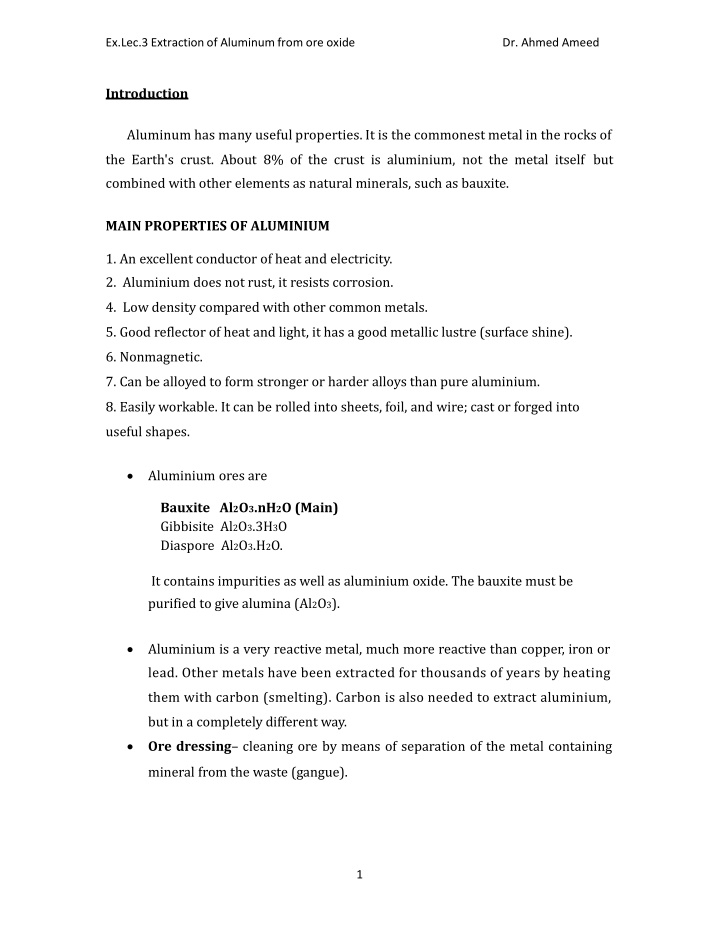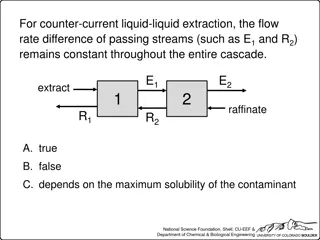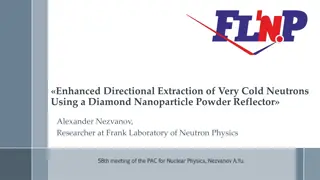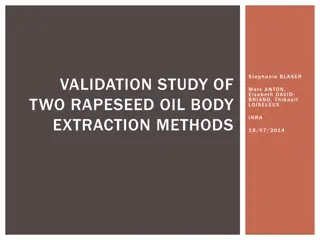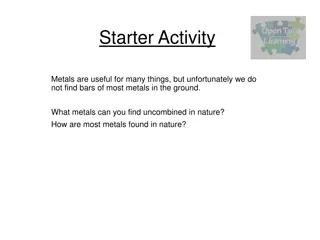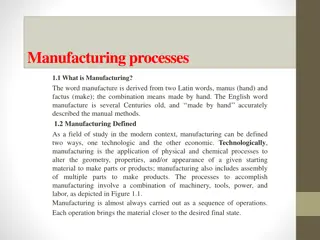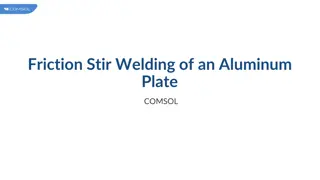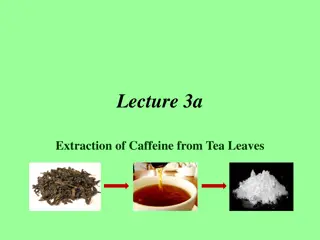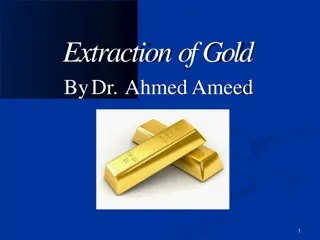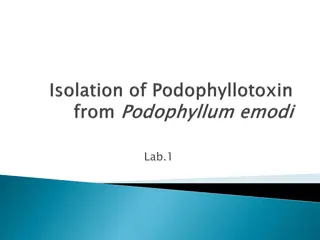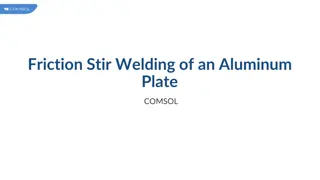Extraction of Aluminum: Properties, Ores, and Processes
Aluminum is a versatile metal with unique properties, abundant in Earth's crust as bauxite ore. The Bayer Process is used to extract aluminum by dissolving bauxite in sodium hydroxide and precipitating aluminum hydroxide. The Hall-Heroult process then electrolytically refines the aluminum oxide to produce pure aluminum. Understanding the methods and processes involved in aluminum extraction provides insights into its significance and applications.
Uploaded on Mar 04, 2025 | 0 Views
Download Presentation

Please find below an Image/Link to download the presentation.
The content on the website is provided AS IS for your information and personal use only. It may not be sold, licensed, or shared on other websites without obtaining consent from the author.If you encounter any issues during the download, it is possible that the publisher has removed the file from their server.
You are allowed to download the files provided on this website for personal or commercial use, subject to the condition that they are used lawfully. All files are the property of their respective owners.
The content on the website is provided AS IS for your information and personal use only. It may not be sold, licensed, or shared on other websites without obtaining consent from the author.
E N D
Presentation Transcript
Ex.Lec.3 Extraction of Aluminum from ore oxide Dr. Ahmed Ameed Introduction Aluminum has many useful properties. It is the commonest metal in the rocks of the Earth's crust. About 8% of the crust is aluminium, not the metal itself combined with other elements as natural minerals, such as bauxite. but MAIN PROPERTIES OF ALUMINIUM 1. An excellent conductor of heat and electricity. 2. Aluminium does not rust, it resists corrosion. 4. Low density compared with other common metals. 5. Good reflector of heat and light, it has a good metallic lustre (surface shine). 6. Nonmagnetic. 7. Can be alloyed to form stronger or harder alloys than pure aluminium. 8. Easily workable. It can be rolled into sheets, foil, and wire; cast or forged into useful shapes. Aluminium ores are Bauxite Al2O3.nH2O (Main) Gibbisite Al2O3.3H3O Diaspore Al2O3.H2O. It contains impurities as well as aluminium oxide. The bauxite must be purified to give alumina (Al2O3). Aluminium is a very reactive metal, much more reactive than copper, iron or lead. Other metals have been extracted for thousands of years by heating them with carbon (smelting). Carbon is also needed to extract aluminium, but in a completely different way. Ore dressing cleaning ore by means of separation of the metal containing mineral from the waste (gangue). 1
Ex.Lec.3 Extraction of Aluminum from ore oxide Dr. Ahmed Ameed Bayer Process The bauxite ore is crushed and ground to produce slurry of coarse powder particles suspended in water. Sodium hydroxide (caustic soda) NaOH is added, and the slurry is heated with process steam to 160-180oC in a steel reactor or autoclave with pressure. The aluminum-containing hydroxides are dissolved during this digestion process, but other constituents of the bauxite remain solid. The digested bauxite suspension, which contains solids plus dissolved Al compounds, is referred to as pregnant liquor. It leaves the digester at about boiling temperature and passes through several stages of filtration referred to as clarification. Precipitation is conducted in large flat-bottomed tanks about 30 m high and 10- 12 m in diameter with typically 10 to 14 in a series. Cooled supersaturated liquor enters the first tank, and particles of aluminum hydroxide begin to precipitate. Seeds (small particles of aluminum hydroxide) are added to accelerate precipitation. Classification in which the aluminum hydroxide particles are separated from the liquor by a combination of cyclones and hydroclassifiers. The coarser particles proceed to the calciner. The finer particles are recycled as seeds. Calcination is the final step of the Bayer process. The particles are dried and heated to 1100C in either a rotary kiln (a tubular-shaped furnace that rotates as the powder passes through) or a fluidized bed (the kiln is stationary, but the powder is mixed by air bubbled through the powder bed). The aluminum hydroxide Al(OH)3(is decomposed to form aluminum oxide (Al2O3) particles suitable for the Hall-Heroult electrolytic smelting process. 2
Ex.Lec.3 Extraction of Aluminum from ore oxide Dr. Ahmed Ameed Choosing the method to extract a metal from its ore. Carbon can be used to extract metals lower in the series, ones which are less reactive than carbon. For example, iron from iron oxide (haematite) or tin from tin oxide (cassiterite). Carbon is less reactive than aluminium. This is why we need a different method, electrolysis, to extract aluminium from its oxide (bauxite). The rule is: Carbon can displace less reactive metals from their ores. The carbon forms the anode block and the lining of the pot (the electrolytic cell), the cathode. As electricity flows between them the alumina splits into liquid aluminium metal and oxygen gas. Dissolved alumina --> aluminium metal + oxygen gas The key to this method of extracting aluminium (Hall-Heroult process) was to find a material which could dissolve the alumina. A natural ore called cryolite was used, 3
Ex.Lec.3 Extraction of Aluminum from ore oxide Dr. Ahmed Ameed although the cryolite is prepared artificially now. Each pot can produce about one ton of aluminium each day. The hot liquid metal is removed regularly from the pot and cast into blocks or ingots. In principle, aluminium could be produced by melting aluminium oxide (alumina) and passing an electric current through it. Unfortunately the oxide is a refractory material with an exceptionally high melting point of about 2000oC. Refractories are used to line furnaces. The function of cryolite is to lower the melting point of aluminium oxide. By dissolving the alumina in a second aluminium compound (cryolite, Na3AlF6) the extraction process can operate at a more economical temperature of 950C. There is very little alumina in the melt, about 5% alumina and 95% cryolite. Fresh alumina is added regularly as the electrolysis proceeds. When electric current passes between the anodes and the cathode through the cryolite, aluminum oxide decomposes to metallic aluminum deposited at the cathode and oxygen liberated at the anode. 4
Ex.Lec.3 Extraction of Aluminum from ore oxide Dr. Ahmed Ameed The molten aluminum is periodically tapped from the furnace into a crucible and cast into ingots. Electrode Reactions The carbon cathode (negative electrode) is the lining of the pot. Al3+ + 3 e- Al metal (Reduction) The aluminium ions gain electrons from the cathode and become aluminium atoms. The carbon anodes (positive electrodes) are made by baking a mixture of petroleum coke and pitch ( ). Carbon (graphite) is the only non-metal that is a good conductor of electricity. 2O -2 O2 + 4 e- (Oxidation) The oxide ions lose electrons to the anode and become oxygen gas. There is a problem when hot carbon (the anode) comes into contact with oxygen. The anode burns away to form carbon monoxide and carbon dioxide gases. The anode is slowly lowered into the melt as the surface burns away. 2C + O2 2CO C + O2 CO2 5
